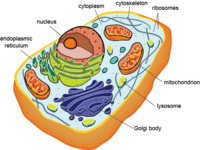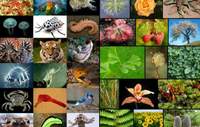
Cell Homeostasis SSA Review Worksheet
Quiz
•
Biology
•
6th - 8th Grade
•
Medium
+2
Standards-aligned
Katherine Heter
Used 48+ times
FREE Resource
Enhance your content
9 questions
Show all answers
1.
MULTIPLE CHOICE QUESTION
1 min • 1 pt

Tags
NGSS.MS-LS1-1
2.
MULTIPLE CHOICE QUESTION
1 min • 1 pt

Tags
NGSS.MS-LS1-1
3.
MULTIPLE CHOICE QUESTION
45 sec • 1 pt

Tags
NGSS.MS-LS1-1
4.
MULTIPLE CHOICE QUESTION
45 sec • 1 pt
Tags
NGSS.MS-LS1-7
5.
MULTIPLE CHOICE QUESTION
45 sec • 1 pt

Tags
NGSS.MS-LS1-1
6.
MULTIPLE CHOICE QUESTION
1 min • 1 pt
Tags
NGSS.HS-LS1-3
7.
MULTIPLE CHOICE QUESTION
1 min • 1 pt
8.
MULTIPLE CHOICE QUESTION
30 sec • 1 pt
If a piece of bread is left out in the air for several days, there is a good chance that mold will appear on the bread. Where does the bread mold come from?
Mold already exists in the bread, and it expands when it is exposed to air
It grows from cells contained in mold spores, which are carried in the air
It is produced by spontaneous generation if the conditions are right
Bread mold can grow from any type of cell that touches the bread
Tags
NGSS.MS-LS1-5
9.
MULTIPLE CHOICE QUESTION
30 sec • 1 pt
If a person cuts his or her finger, eventually the cut will heal, and the skin will be whole again. How does the gap created by the cut get filled?
Cells below the cut make copies of themselves and the new cells fill the gap
Cells on either side of the cut pull towards each other until they close the gap
Cells are harvested from other parts of the body and brought to fill the gap
Cells in the escaping blood get caught in the opening and become skin cells
Tags
NGSS.HS-LS1-4
Similar Resources on Wayground

10 questions
Cell Biology
Quiz
•
7th - 12th Grade

13 questions
Cell theory
Quiz
•
7th Grade

11 questions
Plant and Animal Cells AQA GCSE
Quiz
•
7th - 12th Grade

11 questions
Anatomy of a Cell Quiz
Quiz
•
6th Grade

12 questions
Cell Organelles
Quiz
•
8th - 9th Grade

10 questions
Intro to Cells
Quiz
•
5th - 6th Grade

10 questions
Macromolecules
Quiz
•
6th - 8th Grade

14 questions
Unit 6 Lesson 5 Test Homeostasis and Cell Processess
Quiz
•
6th Grade
Popular Resources on Wayground

20 questions
Brand Labels
Quiz
•
5th - 12th Grade

10 questions
Ice Breaker Trivia: Food from Around the World
Quiz
•
3rd - 12th Grade

25 questions
Multiplication Facts
Quiz
•
5th Grade

20 questions
ELA Advisory Review
Quiz
•
7th Grade

15 questions
Subtracting Integers
Quiz
•
7th Grade

22 questions
Adding Integers
Quiz
•
6th Grade

10 questions
Multiplication and Division Unknowns
Quiz
•
3rd Grade

10 questions
Exploring Digital Citizenship Essentials
Interactive video
•
6th - 10th Grade
Discover more resources for Biology

18 questions
Cell theory & Scientists
Quiz
•
7th Grade

21 questions
25-26 Photosynthesis & Cellular Respiration Quiz
Quiz
•
6th - 8th Grade

15 questions
Characteristics of Life
Quiz
•
7th Grade

20 questions
Claim Evidence Reasoning Assessment
Quiz
•
8th Grade

20 questions
cell theory and organelles
Quiz
•
6th - 8th Grade

22 questions
Photosynthesis and Cell Respiration
Quiz
•
8th Grade

10 questions
Fabulous Food Chains
Quiz
•
4th - 8th Grade

20 questions
Cell Organelles
Quiz
•
6th - 8th Grade
